At the AABR field day at Hexham Swamp, near Newcastle NSW, Phil Milling, Managing Director of Sky Land Management, demonstrated and told us how drones can be used for a variety of land management activities.
Sky Land Management commenced in 2014, using high payload Unmanned Aerial Vehicles (UAV) – drones – which have primarily provided aerial spraying services for weed control.
The drone fleet comprises the latest XAG P30, high payload battery powered units, with a take-off weight of 38.5kg. With these drones multiple aircraft can be flown simultaneously, known as ‘swarming’.
Using a fully integrated Remote Piloted Aircraft System (RPAS) enables an accurate survey to be carried out, with the identifcation and treatment of areas with either liquid or granular pesticides, with precision. This is achieved using a fully integrated XMission survey drone or ground based (RTK) mapping to pinpoint and plan for targeted weed control by P30 agricultural drones.
This brings greater precision to weed management and reduces waste, costs, and environmental impacts.
Safety : Operation of drones on steep, unstable and uneven sites significantly reduces, or in many cases, eliminates the need for personnel in these hazardous areas. For aquatic environments, such as dams, wetlands or wastewater treatment ponds, weeds can be treated without the need to have personnel on the water – again a significant reduction in risk.
The system is set up to minimise the potential for exposure to chemicals, thus reducing the risk to personnel.
Sky Land Management is fully licenced by the Civil Aviation Safety Authority (CASA) and has been operating high payload UAVs / drones since 2014.
Environment: The potential environmental benefits are many. For example, the precision of the drone ensures targeted application, reduced herbicide and water use and the ability to customise areas such as ‘Buffer Zones’ and ‘No Spray Zones’.
Culturally sensitive areas may mean that access for weed management is restricted or not at all possible. However with our Remote Piloted Aircraft System (RPAS) the survey, map, plan and weed control is done without impacting on the site.
Cost Effectiveness: Cost savings both in the short and long term can be expected. More efficient and precise application also brings about chemical cost savings.
Sky Land Management and Hexham Swamp Project
Sky Land Management was engaged by Hunter Local Land Services to survey and treat target weed species from May 2021 to Jan 2022. The target species were Juncus acutus, groundsel bush and others as identified (pampas grass, camphor laurel). Treatment involved aerial spraying of the target weeds in Hexham Swamp with Unmanned Aerial Vehicle (UAV)
The designated zones within the LLS management areas of Hexham Swamp included:
Area ‘A’ – located on the southern fringe of the swamp adjacent to the western Newcastle suburb of Maryland. Two focus areas here were adjacent to Callan Avenue and Whistler Parade.
Area ‘B’ – located on the northern fringe at Hexham, adjacent to the main rail line.
These sites were aerially surveyed using an XMission unmanned aerial vehicle (here after referred to as ‘UAV’ or ‘drone’). The high-definition imagery captured was then analysed, including ground truthing, to identify the main target areas, primarily patches of Juncus acutus (spiny rush). A treatment plan was developed for precision targeting of these infestations with the P30 agricultural spray drone. The flight path plan shows the exact transition routes of the P30 to the treatment sites and the treatment zones (red hatching) that were sprayed.
Using the P30 drone, 6.4 hectares of weeds, primarily Juncus acutus, were aerially treated – Area ‘A’ 5.3ha, and Area ‘B’ 1.1ha.
Both Area ‘A’ (Callan Avenue site only) and Area ‘B’ received primary as well as a follow up treatment. The primary treatment took place in May 2021 and the follow up in November 2021.
In addition to aerial spraying the budget allowed for a few days of ground spraying. This was to start the process of treating small infestations which were too small to safely treat with the UAV/drone. This primarily targeted Juncus acutus, plus other isolated plants of grounsel, pampas grass and camphor laurel.
There is still a considerable amount of weed management to do at these sites, and continuous and ongoing primary and follow up treatment will be needed.
https://www.skylandmanagement.com.au/
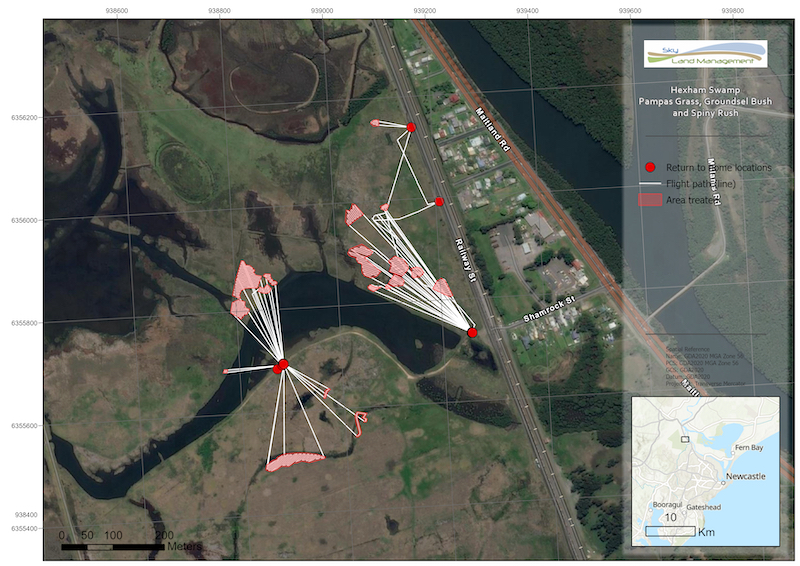
Hexham Swamp – Area B. Flight Plan showing flight paths and treatment areas. Supplied by Sky Land Management
AABR Drone Field Day at Hexham Swamp -Neridah Davies
I recently attended the AABR Drone Demonstration on February 11th, along with around 25 others. This was held at Hexham Swamp, near Newcastle in NSW. Phil Milling from Sky Land Management was our host and teacher.
There is nothing like self-interest to motivate me to explore new ways of doing things. I’ve done my fair share of long walks with heavy, herbicide filled sprayers to gain access to a site for weed spraying, not to mention the trudging through swamps and pushing through spikes and prickles. Now, advances in technology mean that the end of those days of drudgery is in sight. This AABR field day demonstrating the use of drones spraying Juncus acutus at the Hexham Swamp was informative and visually impressive.
We all watched as the drone took off on its pre-programed flight to travel to the designated area and then deliver the spray to the allocated area by flying back and forth in strips. Similar to aerial herbicide application, drones are able to deliver herbicide with a reduced water/ha rate and a reduced herbicide/ha rate compared to high volume spraying. Prior to our arrival they had used drones to accurately survey the area, then identified the area for treatment.
More recently, since working for a native grass seed producer, Cumberland Plain Seeds, I can see the benefit of drones spreading seed in areas where hand seeding and tractors are not suitable, for example on very steep slopes.
I have been asked to give a ‘participant’s perspective’ so, for me, an AABR event is not just about the presentation, I enjoy catching up with past colleagues and swapping ideas with others in the industry. I found the morning interesting and fun with some unexpected ideas to consider from the presentation and from the incidental conversations with others in the industry.
These articles were originally published in the AABR News Issue 151
More on Drones
The AABR webinar on the 5th December 2021, provided information on the use of drones in environmental management. Notes on this can be found in Newsletter 150, and the recording can be viewed on the AABR Website and regenTV youtube.

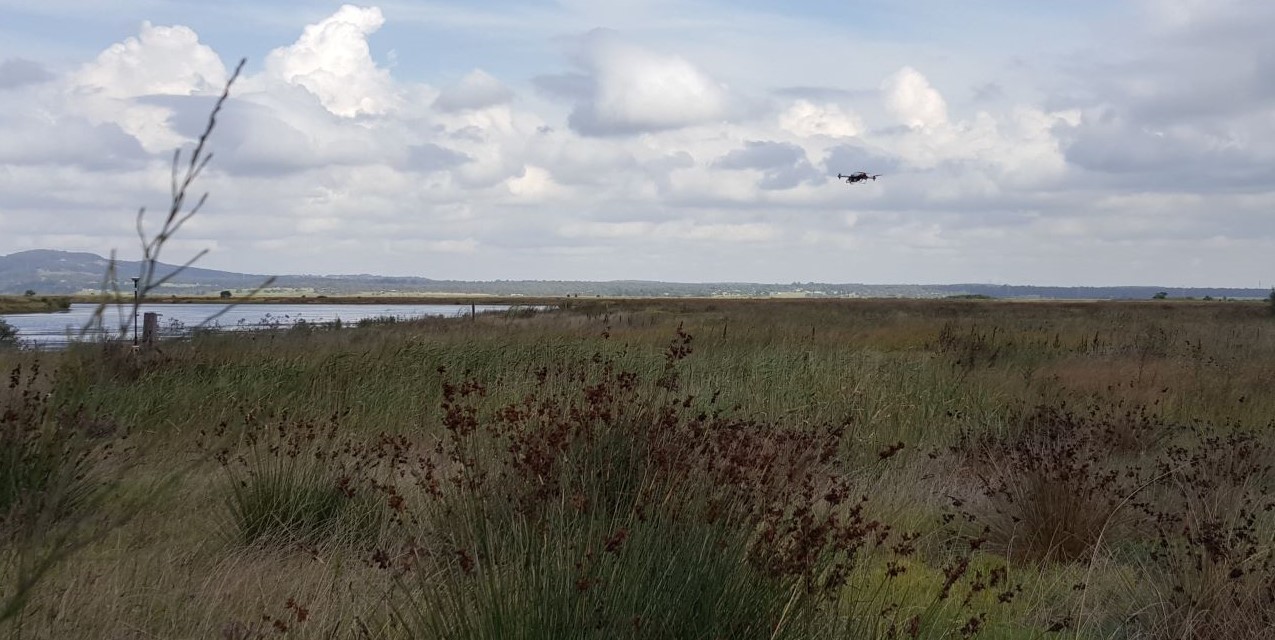
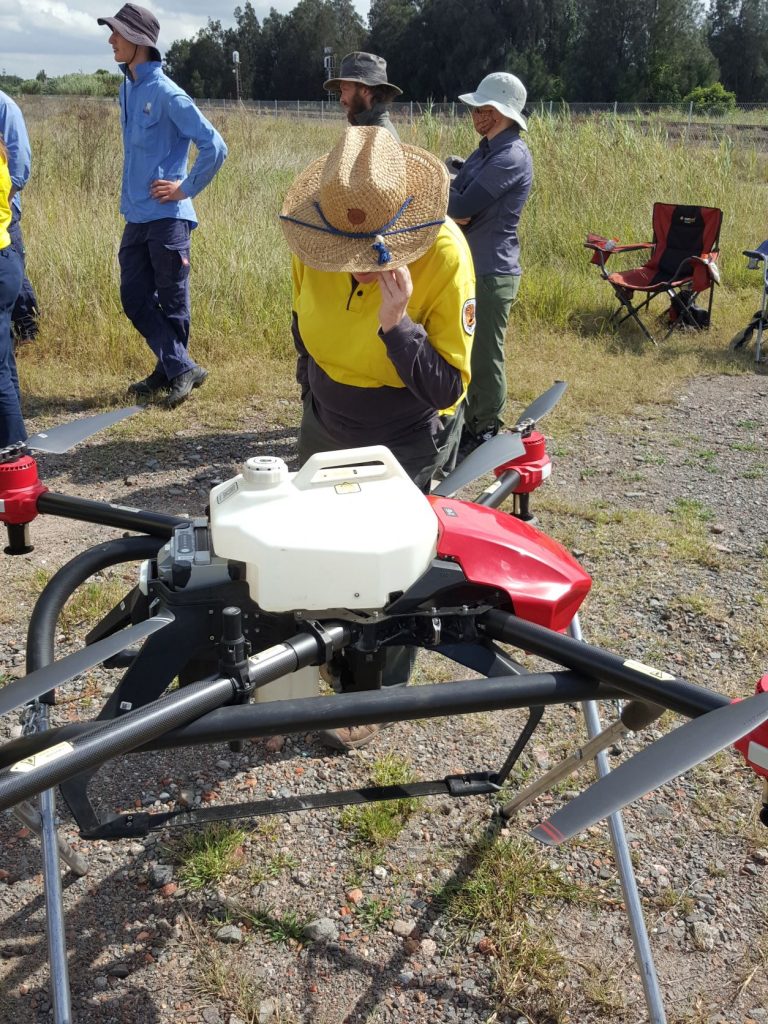

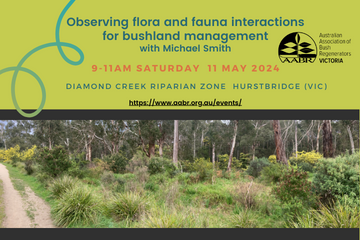
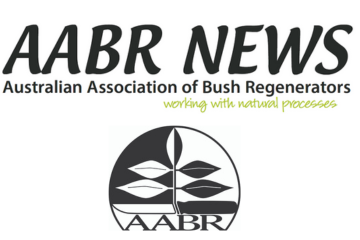
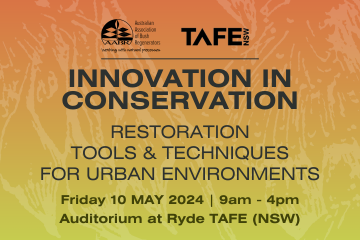
Leave A Comment